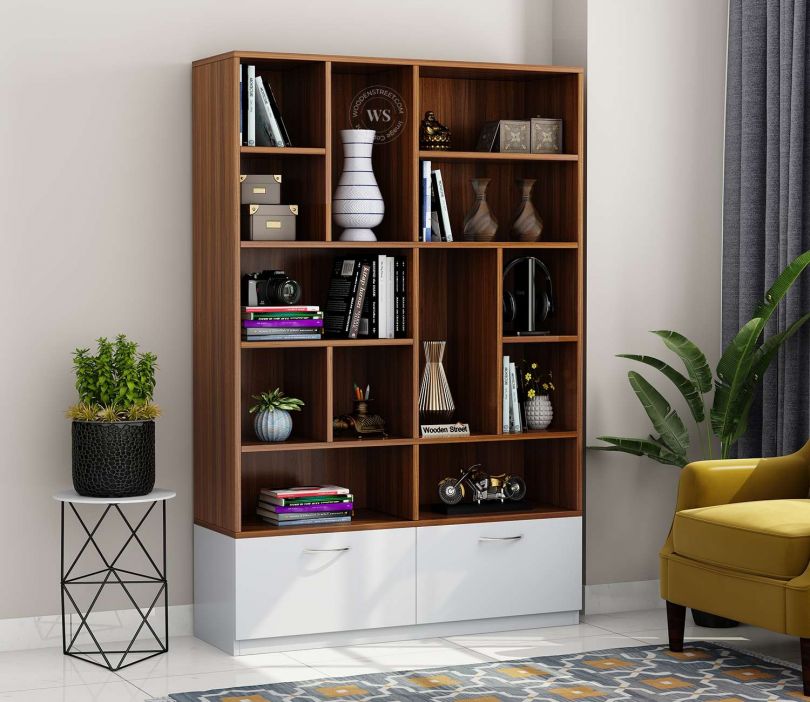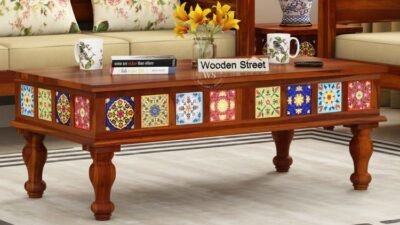Bookshelves are more than just storage solutions; they’re a reflection of your style, a home for your cherished books, and a functional piece of furniture that can transform a room. Choosing the right material for a bookshelf is crucial to balance durability, aesthetics, and cost. Whether you’re a bookworm looking for a sturdy book case or a minimalist seeking a sleek design, understanding the best materials for a bookshelf can help you make an informed decision without breaking the bank. In this article, we’ll explore budget-friendly materials for bookshelves, their pros and cons, and highlight options from Wooden Street, a brand known for quality furniture at reasonable prices.
Why Material Matters for Your Bookshelf
The material of a bookshelf determines its strength, longevity, and visual appeal. A well-chosen book case can withstand the weight of heavy books, resist wear and tear, and complement your home’s decor. On a budget, you want a material that offers durability without a hefty price tag. Let’s dive into the most popular materials for bookshelves, focusing on affordability and practicality.
1. Solid Wood: Timeless and Durable
Solid wood is a classic choice for bookshelves, offering unmatched strength and a natural, warm aesthetic. Woods like mango, sheesham, and oak are popular for their durability and rich grain patterns. A solid wood bookshelf is ideal for heavy book collections, as it can handle significant weight without sagging.
Pros:
- Durability: Solid wood bookshelves last for decades with proper care.
- Aesthetic Appeal: The natural grain and texture add elegance to any room.
- Customizability: Can be stained or painted to match your decor.
Cons:
- Cost: Solid wood is pricier than other materials, though budget-friendly options exist.
- Weight: Heavy, making it harder to move.
Budget Tip: Look for deals on Wooden Street, where you can find solid wood bookshelves made from affordable woods like mango or sheesham. Their collection often includes compact designs that save space and money while maintaining quality.
2. Engineered Wood: Affordable and Versatile
Engineered wood, such as plywood or medium-density fiberboard (MDF), is a budget-friendly alternative to solid wood. These materials are made by bonding wood fibers or layers, creating a strong, uniform surface. An engineered wood book case is a great choice for those who want the look of wood without the high cost.
Pros:
- Cost-Effective: Significantly cheaper than solid wood.
- Versatility: Available in various finishes, from wood-like veneers to modern laminates.
- Lightweight: Easier to move and assemble than solid wood.
Cons:
- Durability: Less resistant to moisture and heavy loads compared to solid wood.
- Aesthetic: May lack the natural charm of real wood.
Budget Tip: Wooden Street offers engineered wood bookshelves with stylish laminates that mimic the look of solid wood. Their designs are affordable, making them perfect for students or renters on a budget.
3. Particle Board: The Budget Champion
Particle board is one of the most affordable materials for bookshelves. Made from compressed wood chips and resin, it’s lightweight and easy to work with. While not as durable as solid or engineered wood, a particle board book case can still serve well for light to moderate use.
Pros:
- Low Cost: Ideal for tight budgets.
- Customizable: Often comes with laminated finishes in various colors.
- Lightweight: Easy to assemble and move.
Cons:
- Durability: Prone to sagging under heavy weight and vulnerable to moisture.
- Lifespan: Shorter than wood or engineered wood.
Budget Tip: For a particle board bookshelf, check Wooden Street’s budget range. Pair it with proper care, like avoiding overloading and keeping it away from damp areas, to maximize its lifespan.
4. Metal: Modern and Sturdy
Metal bookshelves are gaining popularity for their sleek, industrial look and impressive durability. Often made from steel or aluminum, they’re a great choice for modern homes or small spaces. A metal book case can add a contemporary edge while being surprisingly budget-friendly.
Pros:
- Strength: Can support heavy books without bending.
- Low Maintenance: Resistant to moisture and easy to clean.
- Modern Aesthetic: Perfect for minimalist or industrial-style homes.
Cons:
- Cold Appearance: May not suit cozy, traditional decor.
- Noise: Metal shelves can be noisy when placing or removing books.
Budget Tip: Wooden Street offers metal bookshelves combined with wooden accents, blending modern durability with a warm touch. These hybrid designs are often more affordable than solid wood while offering a unique look.
5. Bamboo: Eco-Friendly and Stylish
Bamboo is a sustainable, budget-friendly material that’s gaining traction for bookshelves. It’s lightweight yet strong, with a natural aesthetic that rivals wood. A bamboo bookshelf is perfect for eco-conscious buyers who want an affordable, stylish option.
Pros:
- Sustainability: Bamboo is a fast-growing, renewable resource.
- Affordable: Often cheaper than solid wood.
- Lightweight: Easy to move and assemble.
Cons:
- Durability: Less robust than solid wood for very heavy loads.
- Availability: Limited designs compared to wood or metal.
Budget Tip: While Wooden Street’s bamboo options may be limited, their eco-friendly bookshelves often incorporate similar sustainable materials. Look for compact bamboo designs for small spaces or apartments.
Choosing the Right Bookshelf for Your Budget
When selecting a bookshelf, consider your needs:
- Storage Needs: Heavy book collections require solid wood or metal, while lighter loads can work with particle board or engineered wood.
- Space: Compact or wall-mounted bookshelves from Wooden Street are great for small rooms.
- Style: Match the material to your decor—wood for traditional, metal for modern, or bamboo for eco-chic.
- Budget: Particle board and engineered wood are the most wallet-friendly, while solid wood offers long-term value.
Wooden Street’s range of bookshelves caters to various budgets, with options in solid wood, engineered wood, and metal. Their designs balance affordability and style, making it easy to find a book case that fits your home and wallet.
Caring for Your Bookshelf on a Budget
To ensure your bookshelf lasts, follow these tips:
- Avoid Overloading: Don’t exceed the weight capacity, especially for particle board or engineered wood.
- Protect from Moisture: Keep bookshelves away from damp areas to prevent warping.
- Regular Cleaning: Dust regularly and use appropriate cleaners for the material.
- Reinforce Shelves: For budget materials like particle board, add supports to prevent sagging.
Why Choose Wooden Street?
Wooden Street stands out for its affordable, high-quality furniture. Their bookshelves come in various materials, from solid sheesham to budget-friendly MDF, ensuring there’s something for every budget. With customizable options and frequent discounts, you can find a durable, stylish book case without overspending. Their user-friendly website and customer reviews make it easy to choose a bookshelf that suits your needs.
Conclusion
Choosing the best material for a bookshelf depends on your budget, style, and storage needs. Solid wood offers timeless durability, engineered wood and particle board provide affordability, metal brings modern strength, and bamboo adds an eco-friendly touch. By exploring options from retailers like Wooden Street, you can find a bookshelf that balances cost and quality. Whether you’re furnishing a cozy reading nook or a modern office, the right book case will keep your books organized and your space stylish for years to come.
sumssolution.com




